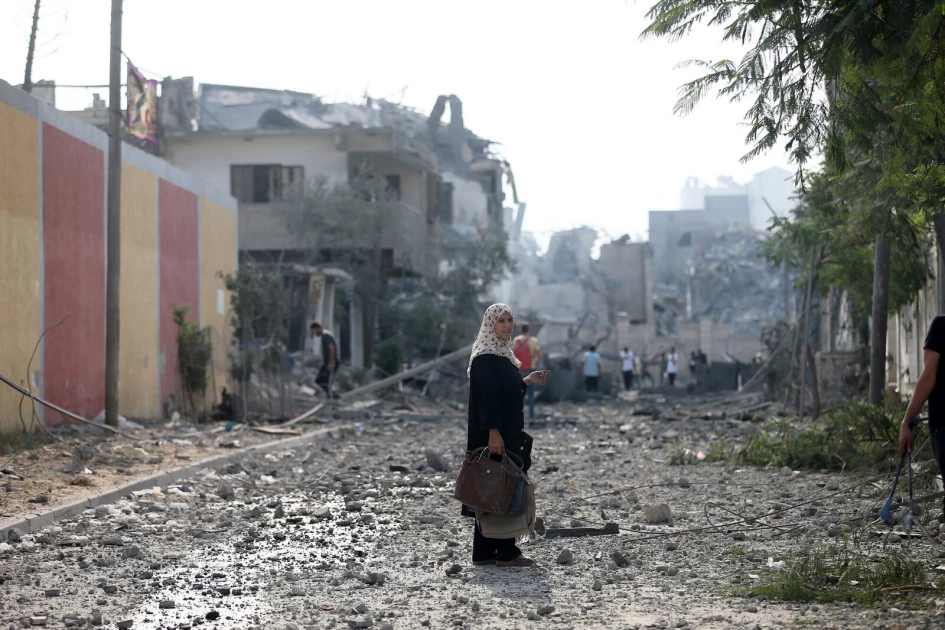Gaza: five things to know about the war-torn Palestinian territory

The Gaza Strip, devastated by 15 months of war between Hamas and Israel,
is a Palestinian territory under Israeli blockade since 2007.
A truce that took effect on January 19 is fragile and gives no guarantee
of a lasting peace.
And if there is uncertainty over the latter stages of the ceasefire, due
to be hashed out in negotiations, there is even less clarity over the
territory's future governance.
Israel has said there can be no post-war role for Hamas, the Palestinian
militant group that has ruled Gaza since 2007, and sparked the war with its
unprecedented October 7, 2023 attack on Israel.
But while Hamas has been greatly degraded in the fighting, it remains the
dominant force in Gaza despite Israeli vows to eradicate it.
- Small patch by
the Mediterranean -
A small strip of land of 365 square kilometres (140 square miles), Gaza
is home to 2.4 million people.
It has a border with Israel to the east and north and Egypt to the south
with the Mediterranean Sea on its west coast.
After the 1948-1949 Arab-Israeli war that led to the creation of Israel,
Gaza was placed under Egyptian administration.
Most of Gaza's residents are descendants of Palestinians who fled from
their homes during the Arab-Israeli war, according to the UN's agency for
Palestinian refugees, UNRWA.
Israel occupied Gaza during the 1967 Six-Day War and it was only fully
returned to Palestinians in 2005, when Israel withdrew soldiers and settlers.
- Young, urban
population -
The population grows by 2.7 percent per year, due to a strong birth rate
(3.4 children per woman).
Before the war, the population was three-quarters urban, with Gaza City
home to 778,000 inhabitants, according to the CIA.
The United Nations has said 90 per cent of Palestinians were displaced at
least once during the war, and many who returned home after the ceasefire have
had to camp near the ruins of their destroyed homes.
In 2007, Israel imposed an air, land and sea blockade after Hamas --
which Israel, the United States and the European Union classify as a terrorist
group -- took control of Gaza.
Israel imposed a "complete siege" on the territory after
October 9, 2023, cutting off water, electricity and food supplies, sometimes
loosening, sometimes tightening aid entry until the ceasefire eased
humanitarian aid truck access.
Gaza's only entrance point not controlled by Israel, the Rafah crossing
on the border with Egypt, was closed after Israel seized it in May 2023. It
reopened, with Israeli coordination, on February 1 as part of the ongoing
ceasefire deal.
The United Nations has said the humanitarian situation in Gaza is
"catastrophic".
Just over four-fifths of Gaza's population lived in poverty before the
war, according to UNRWA.
Almost half of the population was unemployed (46.6 per cent), with a
higher proportion of Gaza's young people -- 62.3 per cent of 15-29-year-olds --
unemployed.
- Fifth war since
2008 -
This is the fifth war between Palestinian militants in Gaza and Israel
since 2008.
The wars in 2008, 2012, 2014 and 2021 were marked by devastating Israeli
air strikes on Gaza and barrages of rockets raining down on Israel from the
other direction.
Israel pounded Gaza with air strikes after Hamas militants stormed into
southern Israel on October 7, 2023, killing 1,210 people, mostly civilians,
according to official Israeli data.
Since then, more than 47,552 Palestinians, mainly civilians, have been
killed in the deadliest war to date, according to Hamas-run Gaza's health
ministry.
- Widespread
Destruction -
Relentless bombing and shelling in Gaza have brought destruction on an
unprecedented scale.
Over 69 per cent of all buildings in the territory had been destroyed or
damaged in the war, according to the UN's satellite agency, UNOSAT, including
at least 245,000 homes.
Want to send us a story? SMS to 25170 or WhatsApp 0743570000 or Submit on Citizen Digital or email wananchi@royalmedia.co.ke
Comments
No comments yet.


Leave a Comment